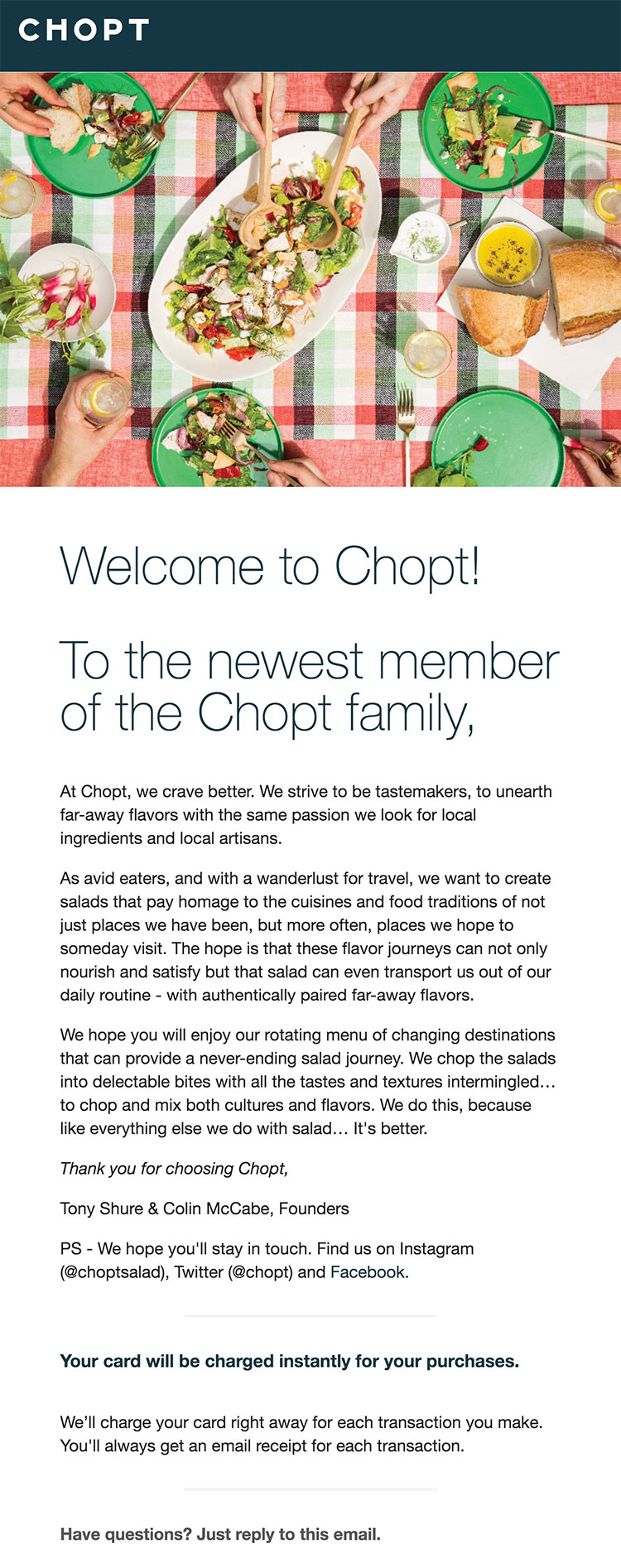Have you ever subscribed to an email list only to be bombarded with daily emails—ones that didn’t appeal to you or your interests? We all have. No one wants impersonal email after impersonal email pouring in, especially if the content is irrelevant.
Most likely you unsubscribed from that list, or perhaps you even marked the emails as spam. The good news? This probably stopped these relentless emails.
The bad news? If you’re not sending relevant content to your list, the same thing could happen to your subscribers.
Why is relevant content important?
If you own a business, you know how important it is to both attract and retain customers. Perhaps the best way to accomplish these goals is by proving you have products worth purchasing, offers worth redeeming, and content worth reading.
This is where relevant content comes into play.
Content (i.e. the articles, recommendations, offers, and copy you send to subscribers) is a huge part of how you develop your relationship with your subscribers. In fact, 81% of marketing leaders put content at the core of marketing.
In other words, professional marketers see the benefits of content. By offering relevant information people want to consume, you organically create a process conducive to selling your products. You do this by creating content people look forward to reading and seek out. People who feel this way about your content will build a relationship with you and when it’s time for them to buy, you’ll be at the top of their list.
For instance, the New York Times sees newsletter subscribers consume twice as much content as non-readers, and these subscribers are twice as likely to become paid subscribers.
What’s more, content marketing is fairly inexpensive. When compared to paid search, content marketing has lower initial costs and deeper long-term benefits. This means content not only drives results, but it proves to be cost-effective, too. With these statistics in mind, consider how impactful it is to send content your subscribers actually want.
How to send relevant content
Okay, so now you know relevant content is valuable to your marketing strategy, but how do you create information your subscribers want to consume?
Send timely messages.
Timely messaging can take a number of forms, but if you invest on the front end, you can broaden your impact moving forward. The idea here is to send content at the time it is most applicable to your subscribers.
You wouldn’t want a Christmas email during January or a birthday message at the wrong time of year, right? Those are timely messages that land in the inbox exactly when they’ll have the most impact.
Set up triggered emails.
First, automate specific emails by incorporating specific triggers. These triggers can be as simple or as complex as you want, but basically, you want to send an email at a vital point in your customer’s journey. So an email is triggered when your subscriber performs a certain action or hits a certain milestone or date.
Examples include welcome emails, replenishment emails, abandoned cart emails, and transactional emails. While each of these emails aims to convert, they also do something else: They build trust with subscribers.
Check out this welcome email example from Chopt to see what we mean.
The messaging here welcomes subscribers into the “Chopt family”, explaining the values and vision behind the restaurant. The email also explains how any transactions moving forward will work and what you can expect moving forward. Additionally, Chopt ditches the “no reply” model and invites subscribers to respond directly via email.
Schedule holiday and event emails.
Another way you can send timely emails? Engage with the holidays and events that matter to your subscribers. Doing this shows you’re engaged with the world around you and, more importantly, the world your subscribers care about.
Consider this email from Society6 that mentions a number of holidays and events.
Society6 uses the 4th of July to engage subscribers in a sale, and the email also provides relevant options for the season. For instance, the t-shirts are being advertised as summerwear, and a bright palette invites subscribers to consider this season’s colors.
But events don’t just apply to B2C brands. In fact, nonprofits have a unique opportunity to take advantage of relevant happenings, too. Holidays and events can be a great way to encourage donors to take action.
Notice how the ACLU does just that with this Pride email.
This email takes a chance to both celebrate Pride and also remind readers how important donation and support efforts continue to be. After providing stories from real people, the email closes with a donation CTA.
Focus on localised efforts.
Another way to make your content relevant is by localising your outgoing messages. By collecting information on where your subscribers live, you can localise their emails to be especially relevant and accessible to them. Plus, locally targeted content has six times the engagement.
But it’s important to understand your audience as well. Make sure your translations fit your subscribers and their cultural expectations.
Consider the two emails below from Vecteezy. One is in English, and the other is in Spanish. While they’re organised in the same way and give the same general information, the Spanish version isn’t a word-for-word translation, because it’s written to be the best version for each subscriber receiving it.
Now that you know some ways and times to send relevant content, what is the actual relevant content the emails should contain?
Ask not what your subscriber can do for you.
Yep, we went there. The truth is: Even though you want your subscribers to convert and earn revenue for your business, you should be asking what you can do to benefit those same subscribers. Promotional content and sales are useful, but if that’s all you’re sending, you run the risk of your prospects unsubscribing.
Curate content for your subscribers.
Give people a reason to open your email each day with helpful tutorials, customer stories, testimonials, lifehacks, and more. One survey suggested that businesses could greatly improve their email efforts just by sending more informative content to subscribers, meaning people want quality content, and you have an opportunity to provide it.
But what if you don’t create enough content to fill your emails? If your content team is small (or nonexistent), you might consider hiring freelancers, accepting guest posts, and even compiling industry news from other sources. These are all relevant content options you can use to make your emails a one-stop shop for your audience.
Scale your results.
As you grow your list and your content strategy, you can track what works and what doesn’t. Take stock of which emails get opened, when, and which links receive the most clicks. There are different standards for different industries but our 2019 email benchmarks can tell you where to aim, depending on your profession.
If you see that certain emails perform well, emulate that style as you design your upcoming campaigns. Alternatively, if you see that certain content drags and doesn’t get the response you want, consider scrapping it or evaluating how it can be improved.
Continue your success with segmentation.
Segmentation plays an important role in scaling the results you see from email marketing. For instance, we discussed timely messages based around events and localisation. Depending on where your subscribers live, their holidays, their weather, and their culture, their expectations for content will be different, so splitting your list into appropriate segments will make sending the right content to the right people much easier.
In fact, you can get as specific as you’d like with your subscribers, and you should. Consider creating segments based on the type of special offers and content that people like. That way you’ll send exactly what subscribers want every time.
Additionally, certain subscribers are probably loyal, longtime customers, whereas others are just getting started. Use segmentation to break up these dynamic parts of your list. This way, you can continue personalising your content and ultimately continue scaling your business.
Wrap up
We’ve all been at the other end of a batch-and-blast email campaign. When we receive messages that don’t appeal to us, it can feel impersonal and even overwhelming. But your business can—and should—be different. By only sending relevant content, your subscribers will not only engage with your emails, but they will even look forward to reading them.
Content marketing is a successful, cost-effective way to attract and retain customers. Let information and data guide how you work. By pairing this process with a journey optimised for quality user experience, you will successfully send relevant content to engaged subscribers every time.
This post is a part of Campaign Monitor’s Marketing & Mixology series. Check out these other pieces in the series:










